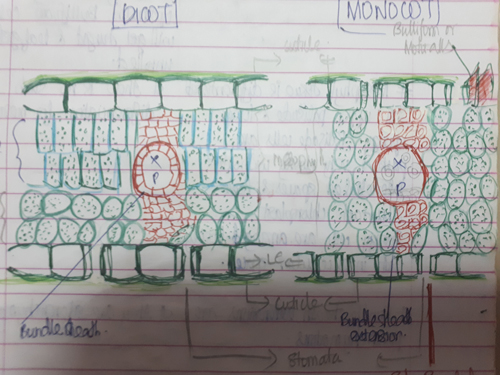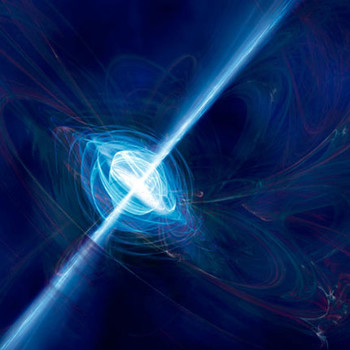Question #d2aa0
1 Answer
See below.
Explanation:
A typical leaf contains epidermis made of cuticle, mesophyll cells[parenchymatous tissue with chloroplast perform photosynthesis}, stomatal apparatus{guard cell and subsidiary cell}, bundle sheath with vascular tissue{xylem,phloem}, bulliform cells in monocots etc.
The leaf cross section of monocot and dicot leaves are different.
DORSIVENTRAL{BIFACIAL} LEAF: IN DICOTS
- Present at right angle to the stem.
- the upper surface of the leaf receives more sunlight{so difference in internal structure- differentiation of mesophyll}
- seen in dicots
- the cuticle is seen on both surface [more thick in upper}
-
stomata are present more on lower
-
mesophyll cell is differentiated into upper palisade parenchyma [very closely packed without intercellular spaces
cylindrical elingated/blue} and lower spongy parenchyma {spongy tissue-arranged loosely with intercellular spaces/shown circular and green}- - Parenchymatous bundle sheath extensions.

ISOBILATERAL LEAF IN MONOCOTS
- Arranged parallel to stem
-
Both surface of the leaf receive equal amount of sunlight [so no difference in internal structure of leaf}
-
seen in monocots
-
equal thickness of cuticle
-
mesophyll cells not differentiated
-
the upper epidermis has a few large colorless thin-walled cells called --BULLIFORM Cells [help in rolling and unrolling of leaf}
- sclerenchymatous bundle sheath extensions


